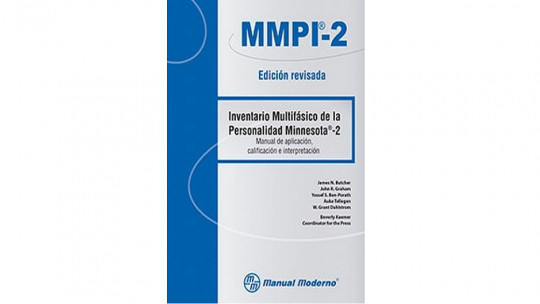We know that in life, few things are usually black or white, but almost everything moves on a gray scale.
However, many times we tend to polarize our thoughts and move in absolutes We will analyze this question throughout this article. We will explore the characteristics of dichotomous thinking, the consequences of its use and other issues of interest.
What is dichotomous thinking?
Dichotomous thinking, also known as polarized thinking, is that way of thinking in which only two alternatives are considered that are totally opposite and mutually exclusive It is also commonly known as all-or-nothing, black-and-white thinking.
As we anticipated in the introduction, this is a very common way of thinking for certain people, but that does not make it logical, or at least not always. And, except in very specific circumstances, there are few occasions in which the possibilities are really two and also differentiated in such a radical way.
Therefore, we could say, when talking about dichotomous thinking, that we are dealing with a way of seeing reality that presents a distortion. This does not necessarily mean suffering from any pathology, as it is a phenomenon that all people have experienced on some occasion, but some will do so more frequently than others.
Subjects who tend to fall into this way of seeing the world usually have one characteristic in common: an authoritarian way of being. This personality gives them a categorical worldview, which is what shapes their dichotomous thinking. That is to say, They usually consider only two alternatives when making approaches: either all or nothing
But, as we have said, there are not many situations in which the decision is between option A and option B. Generally, life offers us a whole range of nuances that these people simply do not consider. Dichotomous thinking would be a way of simplifying reality to the extreme, reducing all alternatives to just two, which are also usually extreme.
Consequences of dichotomous thinking
Obviously, the use of dichotomous thinking has a number of consequences. own simplification of reality It is already one of them, since the person who uses this type of thinking is ignoring a whole range of possibilities of thought and action that are limiting him in his behavior, since he only considers two possible options, although there are many more.
Another problem with polarized thinking is that one can tend to fall into different biases, since the person opts for a simpler way of reasoning, which implies less use of resources (hence the simplification of the reality that we saw). By using these thinking biases, the subject ignores information that can be very valuable.
In fact, dichotomous thinking has been described by psychology personalities such as Aaron Beck as an immature and primitive way of reasoning. Beck sees negative implications in these thought processes, as he believes that these subjects have problems identifying the different dimensions of reality they are considering.
Likewise, Aaron Beck points out that individuals who tend to use dichotomous thinking do not usually rethink their statements , so, even when they are wrong, it is difficult for them to give in by changing their approach. On the contrary, they will remain firm in their categorical position.
Other authors, such as the Japanese psychologist, Atsushi Oshio, go beyond the authoritarian personality we were talking about, and propose through their studies that subjects who usually reason through dichotomous thinking, usually score high on the narcissism scales but At the same time they show a low self-esteem index.
Not only that. Other personality characteristics of these people would be the need to be in control, a search for perfectionism and a low tolerance for ambiguity situations They are also radical in their thinking, rejecting options contrary to their preference, since they only consider their option and the opposite one, without intermediate possibilities.
But in addition, an abuse of dichotomous thinking can affect the subject’s state of mind, since constantly moving in absolutes can generate frustration by not always being able to impose one’s criteria and considering that this entails inevitably having to suffer the totally opposite option. Damage to mood could even lead to depressive symptoms.
This way of seeing life can also have consequences for the establishment of appropriate social relationships Well, equally, these can be deteriorated if the person tends to move to extremes and try to have only the alternative they propose validated, as opposed to the other, which would represent everything they do not want.
Obviously, it is an unrealistic way of reasoning, and it is understandable that it generates frustration to a greater or lesser extent.
How to modify it
But we must not fall into pessimism, because the good news is that Dichotomous thinking is a phenomenon that can be reversed Obviously, depending on the personality characteristics of the subject in question, this process will be more or less simple and will allow more or less flexibility in the new way of reasoning.
Replacing dichotomous thinking with a broader way of thinking that considers the entire range of alternatives that the person has at their disposal at a given moment is a way to enrich our mental and reasoning processes. Therefore, it is a way that increases the problem-solving capacity, since we tend to see new ways that previously went unnoticed.
Work to encourage flexible rather than dichotomous thinking is more effective if done at an early age Therefore, it will be easier to get a child used to reasoning using flexibility instead of dichotomy than trying to do it with an adult who tends to constantly use dichotomous thinking.
But the work, without a doubt, is worth it. The possible frustration that may arise from constant use of these reasonings will tend to decrease as we move away from absolute positions. Likewise, you can experience greater creative capacity and even more empathy towards other people’s positions.
We see, therefore, that flexible thinking offers a whole series of advantages that are more difficult to find if we opt for dichotomous thinking.
Examples of dichotomous thinking
After carrying out an exhaustive exploration of the implications of dichotomous thinking, it would only be necessary to contemplate some simple examples to be able to establish said knowledge.
1. Black or white
We have already seen that dichotomous thinking implies an all-or-nothing differentiation. For example, a person could consider carrying out a complex task that will take many hours, in one go, with the consequent fatigue that this will imply, compared to the opposite option, which would be to do nothing.
As we see, would be ruling out the entire range of intermediate alternatives which would consist of dividing said task into different days, so that the effort was not so intense, or even requesting help from another person, if this were possible, to equally distribute the workload among several people.
2. Either with me or against me
On many occasions, dichotomous thinking is posed as a personal issue in which the subject considers that the other agrees with him one hundred percent, or on the contrary is radically against him. You will hardly realize that you can share parts of your reasoning, but not all
It can also be presented as a reasoning that is close to coercion, either you are with me or you are against me, radicalizing the positions and considering that anyone who is not on the same line of thought is practically an enemy. As we see, these are very rigid approaches, typical of authoritarian mentalities.
3. Perfection or catastrophe
Likewise, Dichotomous thinking can cause the person who uses it to fall into a distortion that makes them perceive only two options : either absolute perfection, or a disaster. Obviously, the decisions we make in life are not always perfect, but that does not imply, by any means, that they trigger a catastrophe.
However, for someone who moves in dichotomous terms, failure to achieve total perfection can only be considered a complete failure. This is a perfect way to live in a state of constant frustration and suffer the consequences on our mood.
As we have already seen, the best antidote to avoid falling into this problem is none other than working on flexible thinking and thus contemplating all the alternatives that life offers us.









